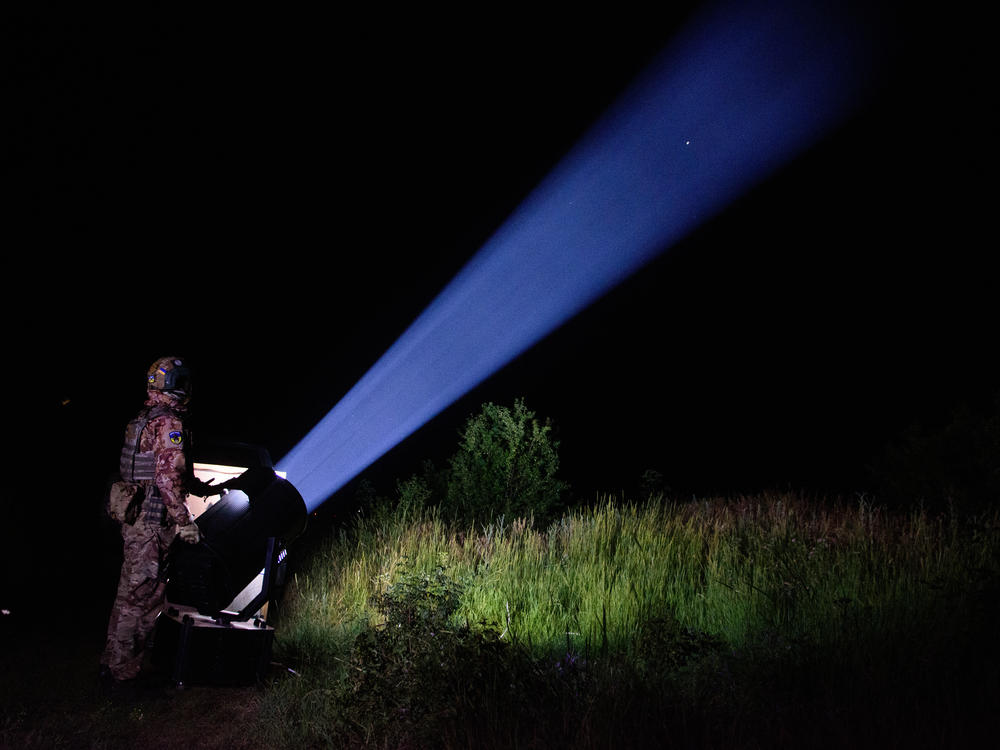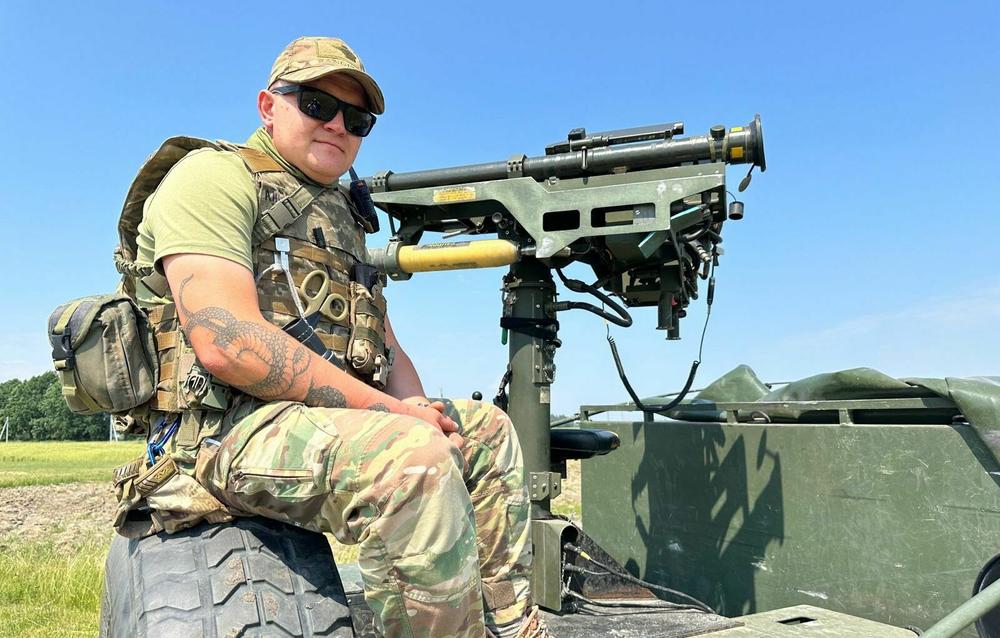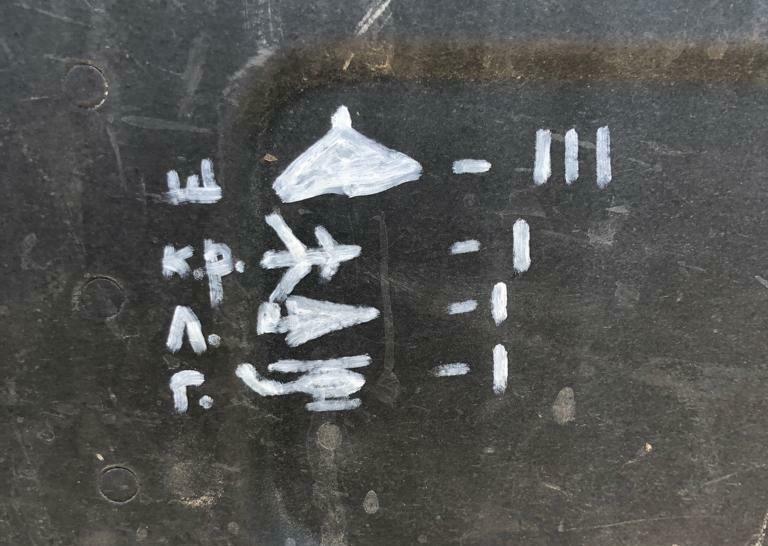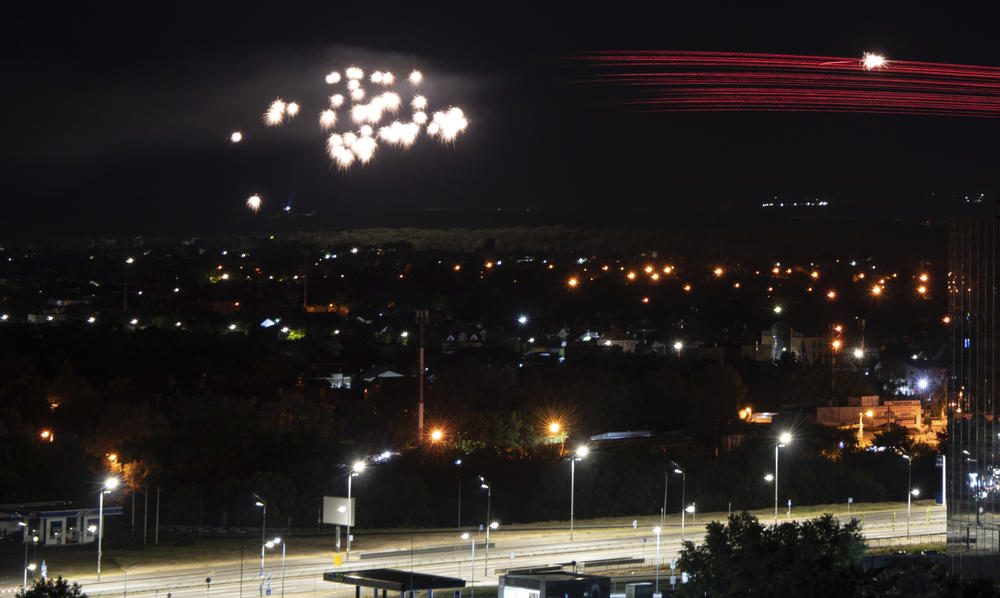Section Branding
Header Content
To protect against Russian airstrikes, Ukraine's defenders 'shoot and scoot'
Primary Content
OUTSIDE KYIV, Ukraine — When Russia launches an airstrike on Kyiv, the first line of defense is parked in this sprawling field of hay and bright red poppies outside the capital.
The protection consists of two Ukrainian soldiers and their American-made Humvee, with a U.S. Stinger missile system mounted on back.
The ground is littered with cigarette butts, evidence that the pair endures long spells of tedium, punctuated by a few minutes of surging adrenalin.
"This is a cat-and-mouse game," said Dmytro, an army lieutenant who's serving as a guide. Like most all Ukrainian troops, he gives just one name.
"Russians try to find weak spots. We try to cover all of them up. This mobile unit is a first barrier for the rockets," said Dmytro.
One member of this air defense team is Yuri, who explains how they limit the damage inflicted by Russia's relentless air attacks.
"We receive the alert that we need to look for certain projectiles. It can be a missile, a plane, a drone, whatever. Then we have seven minutes to get ready," said Yuri.
If they fire one of their Stingers, that gives away their position to the Russians. They have to flee quickly, a tactic known as "shoot and scoot."
Russia launches most airstrikes after dark. So the Ukrainian teams routinely work through the night. For example, Russia fired on Kyiv 17 days last month, mostly in the pre-dawn hours.
"The last few months were quite intense. We were sleeping about two hours per night," said Yuri. "We're so exhausted we can sleep anywhere. In the Humvee. On the ground. We don't care where we sleep."
Yuri says his home is just 60 miles away, but he hasn't been there in three months.
A high rate of success
His partner Serhiy says he's fired eight Stinger rounds in total. He missed twice.
He says the other six were direct hits. They're recorded in white paint on the side of the camouflaged Humvee — one fighter jet, one helicopter, one missile and three drones.
Ukraine's air defense has been extremely effective since Russia's full-scale invasion 16 months ago. But Kelly Grieco, at the Stimson Center in Washington, says that wasn't a sure thing at first given Russia's much more powerful air force.
"They have offered a master class really in how to do air defense, and particularly a strategy of air denial, of knowing that you're at a disadvantage, Grieco said. "They've played their hand really well."
Ukraine initially relied on an aging Soviet-era system, the S-300. It still worked extremely well. But Ukraine has acknowledged that it's running low on missiles — and only place that makes them is Russia.
Russia tries to exploit this shortage, unleashing thousands of missiles and drones, knowing most will get shot down, but hoping to deplete Ukraine's supply of defensive missiles.
"I think Russia is trying first and foremost exhaust Ukrainian ammunition," she said. "Because if you can't destroy the launchers, if you can cause them to run empty, it's the same effect."
More Western air defense systems on the way
In response, the U.S. and other NATO countries have supplied Ukraine with a range of Western air defense systems, like the Patriot, which has been around for decades, and NASAMS, which are used to protect the White House and other key government buildings in Washington.
"We remain laser focused on meeting Ukraine's urgent needs for ground-based air defense systems," U.S. Defense Secretary Lloyd Austin said recently. "Ukraine's air defenders have saved countless lives."
Ukraine says it is now shooting down incoming missiles and drones at a rate of around 90%. In Kyiv, the best protected city, the figure is even higher.
However, some Russian attacks do get through. A missile strike in the western city of Lviv before dawn Thursday killed four civilians, wounded more than 30 and damaged dozens of homes. City officials called it the biggest attack on Lviv since the Russia invasion began last year.
In the capital, there are several layers of air defense. These small Stinger crews form the front-line, partly because they're so mobile, and also because their missiles are much cheaper than the alternatives.
The Stingers cost around $40,000 a pop. The U.S. Patriot system — the last line of defense — shoots missiles that run about $4 million each.
Ukraine's ground offensive will likely need air defense
Right now, all these air defense systems are geared toward defending Ukraine's cities and other sensitive sites.
But if Ukraine's ground troops advance in their current offensive in the east and the south, they'll need air defenses to follow close behind. Ukraine could move these mobile crews with the troops, but that would take away some of the protection now provided to the cities.
"Ukraine is probably having to rethink right now about whether to keep those systems protecting the cities, or if they really need to bring them to the front in order to give their counteroffensive a better chance of success. Hard decisions, but they may be necessary ones."
Still, Ukrainians remain confident. Dmytro, the army lieutenant, recalls Moscow's long, unhappy history with Stinger missiles.
In Afghanistan in the 1980s, the U.S. provided Stingers to Afghan rebels fighting the Soviets. The Stingers were hugely effective in taking down Soviet helicopters and were seen as one factor that led the Soviets to pull out.
"Russians keep putting their noses where they don't belong. They are not welcome here. So we're gonna throw at them everything we have," said Dmytro.
So far, that's been enough to keep the Russians from gaining air superiority.
Kateryna Malofieieva contributed to this report.
Greg Myre in an NPR national security correspondent. Follow him @gregmyre1.
Copyright 2023 NPR. To see more, visit https://www.npr.org.




